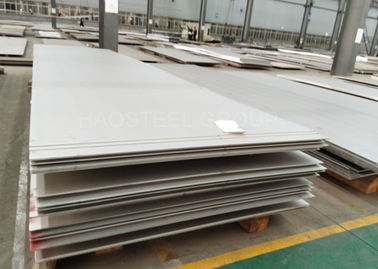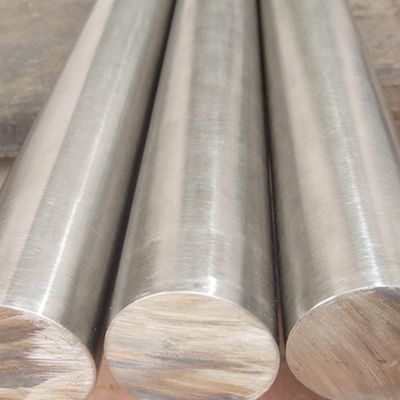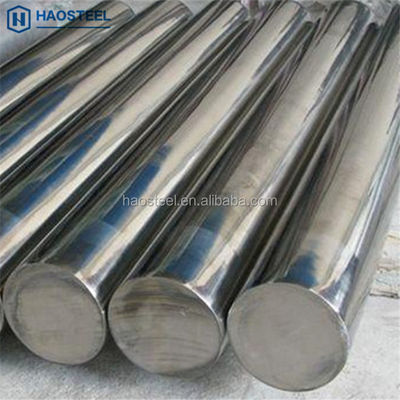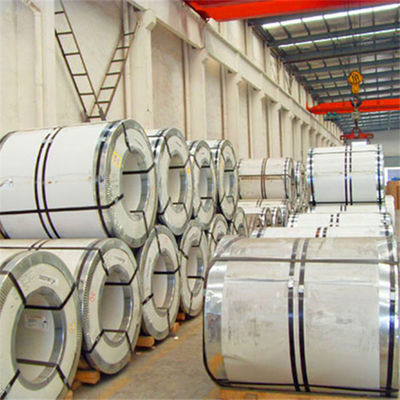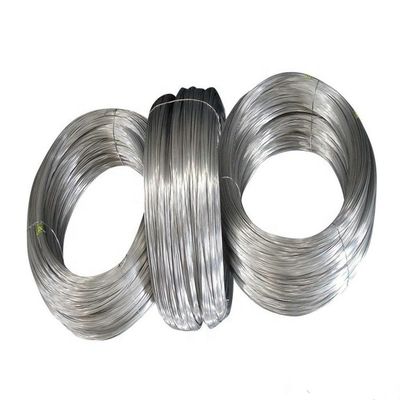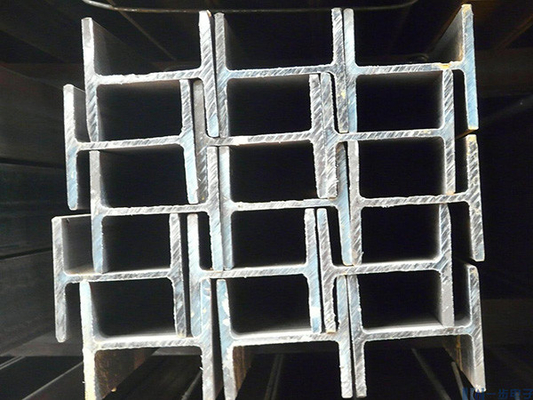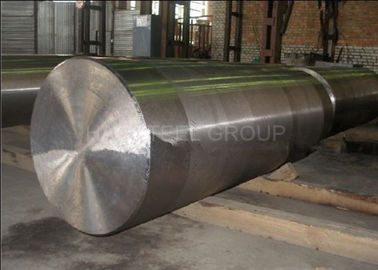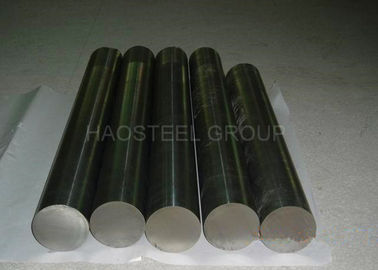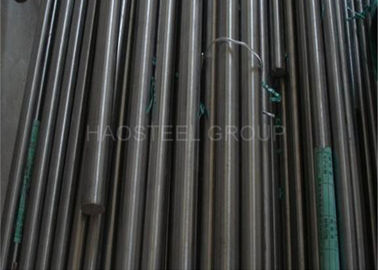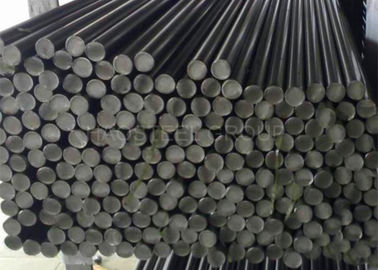630 17-4PH stainless steel round bar heat treatment solid solution hardness qualified UT test
Name: 17-4PH stainless steel round bar
Brand: HAOSTEEL
Executive standard: GB/T1220-2007 or ASTM A564
Heat treatment: None (can be processed according to customer requirements)
Smelting equipment: EF-AOD
Features:
The 17-4PH alloy is a precipitated, hardened, martensitic stainless steel composed of copper and niobium / niobium. This grade has high strength, degree (up to 300℃/ 572°F) and corrosion resistance. After heat treatment, the mechanical properties of the product are more perfect, and the compressive strength of up to 1100-1300 mpa (160-190 ksi) can be achieved. This grade cannot be used above 300℃ (572°F) or very low temperature. It has good corrosion resistance to the atmosphere and diluted acid or salt. Its corrosion resistance is the same as that of 304 and 430.
Physical properties
Density: 7780 kg/m2
Melting point: 1400 ~ 1440°C
Specific heat capacity: 502J / (kg·°C).
Linear expansion coefficient: (H900 heat treatment state)
0.0000108 /K at 20~100°C; 0.0001016/K at 20~200°C; 0.00001136 /K at 20~300°C
Thermal conductivity:
17W/(m*K) at 100°C; 20W/(m*K) at 300°C; 23W/(m*K) at 500°C
Elastic Modulus:
1910 MPa at 20°C; 1910 MPa at 100°C; 1810 MPa at 320°C
Application field
• Offshore platforms, helicopter decks, other platforms
•food industry
•Pulp and paper industry
• Aerospace (turbine blades)
•machinery parts
• Nuclear waste barrel
Standard
ASTM..............A693 grade 630 (AMS 5604B) UNS S17400
EURONORM ..1.4542 X5CrNiCuNb 16-4
AFNOR...........Z5 CNU 17-4PH
DIN..................1.4542
Corrosion resistance
The corrosion resistance of the 17-4 PH alloy is superior to any other standard hardenable stainless steel. In most cases, it has as much corrosion resistance as 304. If there is a risk of stress corrosion cracking, the higher curing temperature must be higher than 550oC
(1022oF), preferably 590oC (1094oF). The optimum tempering temperature in the chloride medium is 550oC-1022oF. The optimum tempering temperature in H2S media is 590oC-1094oF. This alloy is susceptible to corrosion or crack corrosion in static seawater. It has the same corrosion resistance as the 304L grade in the petrochemical, food processing and paper industries.
Machining
We can machine the 17-4 PH alloy in a solution treated or quenched and hardened state. The processing conditions vary with the hardness of the material. We usually use high speed tools or lubricated carbonizing knives for machining. If the customer has very stringent tolerance requirements, we should also consider the dimensional changes that may occur during heat treatment.
Description:
The technical information provided here reflects the highest level and the most comprehensive knowledge we have in editing this material, but as we work on anti-corrosion products, there may be some subtle changes in the content. We recommend that you reconfirm the above information when you place an inquiry or place an order. In addition, each product has some special circumstances when applied. The data and data provided here are only descriptions of the products. Only when our company makes written documents can we regard them as our guarantee and commitment.
Machining:
Hot forming should be performed at a temperature range of 950-1200oC (1742-2192oF). Complete heat treatment includes solid solution annealing, cooling (less than 25oC) and curing (at a given temperature).
Cutting
Thermal cutting (plasma, saw, etc.): This grade of cutting procedure should be appropriate in consideration of the hot metamorphic part. After cutting, it is ground to remove the oxide layer. Mechanical cutting: shearing, stamping, cold sawing, etc.
Welding
17-4 PH alloys can be soldered as follows: SMAW, GTAW, PAW and GMAW. SAW welding can only be carried out after preliminary tests (check for cracks and toughness of the weld metal). Due to the solidification of the ferrite, the possibility of hot cracking and thermal deterioration of the weld metal is reduced. In general, no preheating is required, and the intermediate temperature is controlled at 120 ° C (248 ° F). After a complete heat treatment (solid solution annealing + quench hardening), the toughness is enhanced. Due to its own martensitic structure, the lower oxygen content of the weld metal maintains its good toughness and ductility. In order to avoid cold cracking, hydrogen should be avoided as much as possible. 17-4 PH alloy can be welded with the same filler metal (such as E 630 (AWS A5.4)? ER 630 (AWS A5.9). If the mechanical properties of 17-4PH are not considered in the welding, The austenite is used to fill the metal, and then heat treatment is not necessary.


 Your message must be between 20-3,000 characters!
Your message must be between 20-3,000 characters! Please check your E-mail!
Please check your E-mail!  Your message must be between 20-3,000 characters!
Your message must be between 20-3,000 characters! Please check your E-mail!
Please check your E-mail! 
